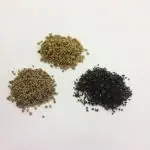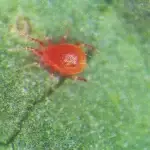Cereals
Overview
Australia produces a significant volume of cereals for human consumption and animal feed to supply local and export markets.
Wheat is the most important crop by far, followed by barley, and oats. Other cereal crops are sweetcorn, maize, sorghum, millet, triticale, and rice.
Cereals are affected by aphids, caterpillars and a range of spider mites. Many pests can be managed with biological controls.
- Aphids are sporadic pests in cereal crops. They can reduce yield, cause plant death and transmit many cereal viruses. The most important species are the Oat/Cereal Aphid (Rhopalosiphum padi), Corn Leaf Aphid (Rhopalosiphum maidis) and the Russian Wheat Aphid (Diuraphis noxia). Aphids can be controlled with parasitic wasps Aphidius colemani (Colemani), Aphidius ervi (Ervi), Aphelinus abdominalis (Aphelinus) and Diaeretiella rapae (Diaeretiella), and generalist predators such as ladybirds, and Green Lacewings.
- Caterpillars (loopers & heliothis) affect grain crops in different parts of Australia and many can be controlled by Trichogramma pretiosum (Trichogramma).
- Two-Spotted Mite can be controlled with Neoseiulus californicus (Californicus) and Phytoseiulus persimilis (Persimilis).
Natural enemies of these pests are likely to be active in nature strips along the borders of crops. However, it is important that you control any weeds along the borders that may act as pest hosts.
Products you can use to control Cereals pests
Biological Services produces a range of products to control pests among cereals.
Other tips for managing pests in your Cereals
Your local Biological Services consultant can provide year-round, professional crop monitoring and expert IPM program advice.
Get tailored advice for your commercial crop
To speak with one of our qualified consultants about your current commercial crop challenge or to learn about the benefits of the IPM maintenance and monitoring services we provide, contact us.








